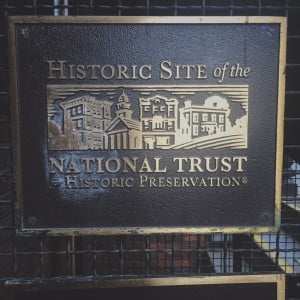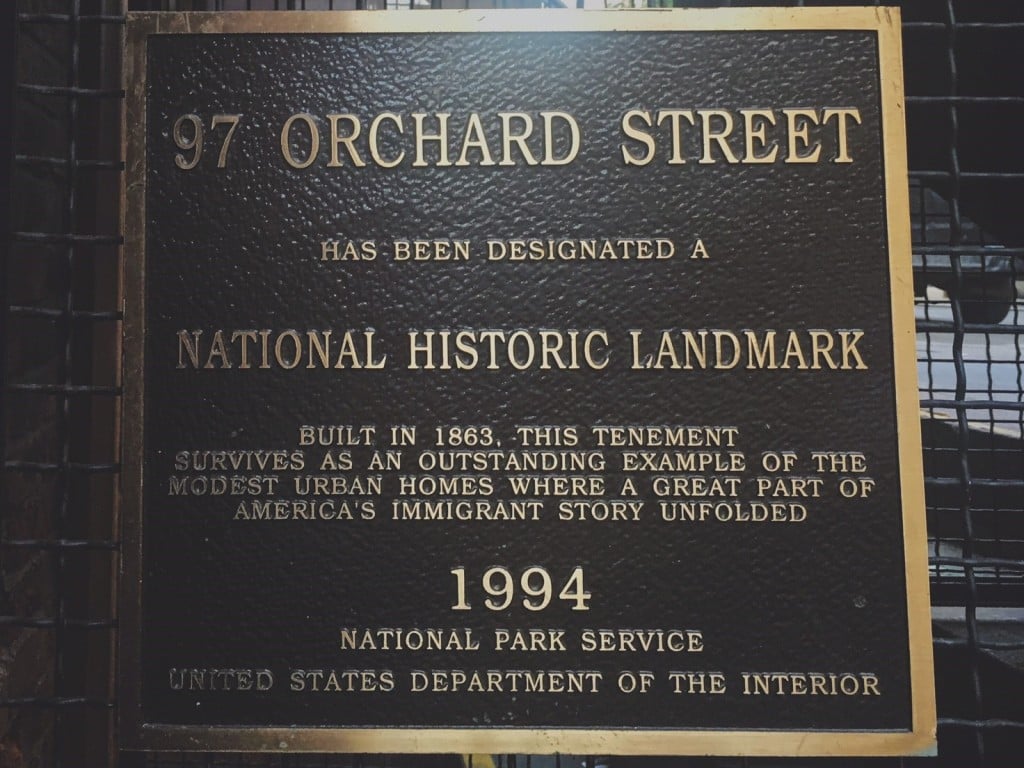- Post by Gemma Solomons, Marketing & Communications Coordinator at the Lower East Side Tenement Museum
Blog Archive
Parks and Preservation
August 2016 celebrates the centennial of the National Park Service, which has spent the last 100 years ensuring beauty and history are maintained in the United States. The Lower East Side Tenement Museum has been classified a National Historic Site and is officially a part of the National Park Service and the National Register for Historic Places.
On the surface, it may seem like there is a great difference between the Tenement Museum and a National Park — but both are dedicated to the conservation and preservation of this country’s rich cultural history. Both work to educate people on their history and their inheritance, both build a foundation of understanding for one’s heritage. (Both would also appreciate if visitors take nothing but memories and not start any fires.)
The first U.S. National Park was actually established in March of 1874 at Yellowstone in the territories of Montana and Wyoming. Afterwards, following in the footsteps of Yellowstone, many other parks, preserves, and monuments sprung up all over the country, but were split among different government agencies. Yellowstone and other similar National Parks belonged to the Department of the Interior, while other historic monuments and natural areas were a part of the War Department and the Forest Service of the Department of Agriculture.
It wasn’t until President Woodrow Wilson signed the Organic Act on August 25, 1916 that a National Park Service was established to keep all these culturally significant places under one management, whose “purpose is to conserve the scenery and the natural and historic objects” with the intention to “leave them unimpaired for the enjoyment of future generations.” This creation of a national system allowed for a broader classification of parks – areas that were not just scenically and scientifically important but historically, too.
It’s strange to think, what with our society being very nostalgia-driven, that there was a time in America when preserving our historical areas wasn’t quite as important as it is now. Following World War II, the development of the National Highway System and increasing urbanization caused the careless destruction of many historical properties throughout the country, and made negative changes to the structural identity of several cities.
 This resulted in the National Historic Preservation Act, signed by President Lyndon B. Johnson in 1966 (which turns 50 on October 15th!) Early preservation movements in this country were typically fueled by patriotism, and focused mostly on specific buildings or areas relevant to the nation’s history. Over time, this mindset eventually evolved into caring and preserving landscapes and neighborhoods.
This resulted in the National Historic Preservation Act, signed by President Lyndon B. Johnson in 1966 (which turns 50 on October 15th!) Early preservation movements in this country were typically fueled by patriotism, and focused mostly on specific buildings or areas relevant to the nation’s history. Over time, this mindset eventually evolved into caring and preserving landscapes and neighborhoods.
Here is where the mission of the National Park Service and the goals of the Tenement Museum align: both work daily to uphold the integrity and innate beauty of our shared history and our shared space. New York City is a city defined by its infrastructure. Its architectural identity is deeply entwined with its history and its residents.
But to anyone who has ever been to New York City — and especially to those of us who live here — it is an area constantly changing. “It’ll be a great place,” goes the famous quip by author O. Henry, “if they ever finish it.”
Buildings are constantly renovating, repurposing, disappearing, or popping up to change the skyline. The Museum often talks about how the cultural makeup of the Lower East Side changed rapidly during the years that 97 Orchard housed some 7,000 immigrants, and the same can be said for the city’s physical attributes. Heck, you can say that so much has changed in this city since the Lower East Side Tenement Museum opened in 1988. One could say this shifting disposition could easily be considered a main characteristic of New York’s identity.
But it is also why preservation is so important. For the Tenement Museum specifically, the safeguarding of immigrant history, tenement living at the turn of the century, tenement architecture, and the vital housing reform movement all serve to foster conversation about our shared past and where our future is headed. In the Lower East Side Tenement National Historic Site Amendments Act, Congress recognized the importance of ensuring “continued interpretation of the nationally significant immigrant phenomenon associated with New York City’s Lower East Side and the Lower East Side’s role in the history of immigration to the United States.”
As the National Park Service prepares to celebrate its momentous birthday, it is still striving to achieve even greater works in their duty to the people in this country. In particular, their dedication to improving their urban spaces — the upkeep and expansion of public parks in places like New York City — is truly noteworthy. This city hugely benefits from the works of the National Park Service, whether it is the recognition of its widespread history or the preservation of its natural beauty.
